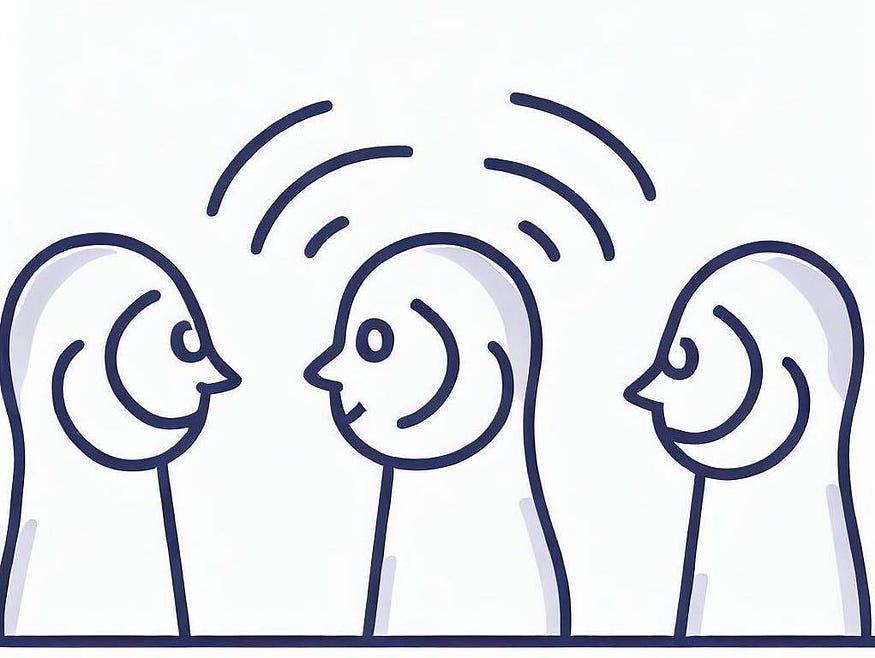Giving and receiving feedback holds the key to personal and professional growth, optimising a team’s efforts and successful execution of a project. And even though feedback is crucial, it is frequently overlooked. There are many factors influencing this; often, feedback is not shared regularly. Articulating one’s thoughts to give effective feedback is another challenge. Finally, one might feel unsure and unable to identify the right person to receive feedback from.
New ways of working add another layer of complexity. While in a collocated team, one finds visual, behavioural or contextual cues to identify if something is working or not, in a remote working culture with distributed teams, the same process becomes a challenge.
As a result, feedback becomes just another external mandatory trigger linked to performance evaluation cycles or reduced to a misunderstood agile ritual that teams blindly follow. In both scenarios, the real intent and impact of feedback is lost. However, there are some simple ways in which the practice can be optimised.
Strike a balance between constructive criticism and acknowledgement of great work
Feedback is a response, observation or reaction to an action; it does not always have to be negative or indicate that an individual needs to improve.
Sharing positive feedback brings in validation and acknowledgement of effort, builds motivation and encourages us to continue on the path of success. Things get complicated when the conversation touches upon areas of improvement. Over-emphasis on what went wrong makes individuals go into a defensive mode and ignore even those points that are valid. Balance is key!
Providing timely feedback is key
Feedback is time and context dependent. The receiver will resonate with feedback only when it is shared promptly. Sharing feedback instantly and having an open conversation about it versus sharing the same feedback much later are not equivalent as the context and opportunity to course-correct are lost when there is a huge gap between the action and feedback.
Another problem with not giving feedback at timely intervals is that the person sharing the feedback might forget some of the aspects she/he wanted to touch upon. Even if they do remember, it might turn into a long list of items that is difficult to prioritise and thus, makes it harder for the receiver to act upon.
Look for feedback opportunities across spectrum of roles and experience levels
Every individual in an organisation has a specific role. She/he could be a developer, designer, analyst or a product owner. Typically, a person seeks feedback from peers in similar roles to become more efficient in their work. But this should not be the case, feedback from various stakeholders is just as important.
One should seek feedback from people in different roles within the organisation. For example, product owners and business users from client teams or other external folks who are a part of the team. Each one would have had different kinds of interactions with an individual at different points in time while working on a project such as product discussions with product owners, feature breakdowns with the designer or analyst, or even technical interactions with external team members.
These various interactions and perspectives help one understand multiple facets of project delivery or working models and identify areas to improve.
Another misconception that people have is that feedback can’t be given to an individual with more experience. This is not true; just like people in other roles will have different perspectives, so will people with different levels of experience. For example, everyone in a team would have insights about the team leader and what she/he can do to become a better leader. On account of the leader’s seniority or experience, team members should not shy away from sharing their feedback.
In non-hierarchical setups like Sahaj where a more experienced person is seen as just another peer, this mental barrier of not wanting to give feedback to a senior is easy to overcome.

Expand conversation on multiple aspects and not just functional areas
It is important to gather one’s thoughts before sharing feedback. Success at workplace is an outcome of various skills, not just technical competency. Effective communication skills, effective customer and client interactions, developing product mindset and ability to deal with people are some other areas to consider while giving feedback. A well-rounded feedback would elevate a professional on all aspects that directly or indirectly influence her/his work.
For similar reasons, while seeking feedback, one must specifically identify key verticals that one wants to focus on.
Back your feedback with examples and scenarios
As feedback is contextual, supporting feedback with right examples and specific scenarios is important. It helps build on the feedback and not leave it at an abstract level. Discussing specific scenarios can help identify patterns that one might choose to continue or change depending on the feedback. Examples also help in coming up with the right action items and validating them when similar scenarios play out again.
Giving or receiving effective feedback is only the job half done. Working on the feedback is an essential next step that will lead to improvement and growth. It is important that one does not get overwhelmed after a feedback session; breaking down the feedback and prioritising with short term and long term goals is helpful. Do not hesitate to ask for help and keep validating your improvements and action items in consecutive feedback sessions. Finally, remember that feedback helps not just the individual but growth of the entire team.
